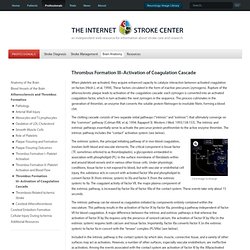

Pathophysiology and types of burns. The International Medical Journal for Students. When we leave hospital - a patient’s perspective of burn injury. Amy Acton Author Affiliations Introduction At the age of 18, I thought I had the best summer job possible, working outside at the local marina, with the prospect of going to college in a few months to become a nurse.

In an instant everything changed. While moving a boat on a trailer, a group of us sustained electrical injuries when the mast hit a high tension power line. Rehabilitation after burn injury. Dale Edgar, Megan Brereton Introduction Prevention of scarring should be the aim of burn management.

For every member of the burn team, rehabilitation must start from the time of injury. Having a substantial burn injury is frightening, particularly as patients will not know what to expect and will be in pain. Consistent and often repetitive education is a vital part of patient care. Pain control In order to achieve desired outcomes and movement habits, ensuring adequate pain control is important. Inhalational injury Aggressive, prophylactic chest treatment should start on suspicion of an inhalational injury. Functional use of a positive … Protecting your child from burns and scalds. B9W1 cell injury and death apoptosis.bmp (405×237) Cellular Injury Index. SEER Training: Anatomy of the Skin. The skin is a vital organ that covers the entire outside of the body, forming a protective barrier against pathogens and injuries from the environment.

The skin is the body's largest organ; covering the entire outside of the body, it is about 2 mm thick and weighs approximately six pounds. It shields the body against heat, light, injury, and infection. The skin also helps regulate body temperature, gathers sensory information from the environment, stores water, fat, and vitamin D, and plays a role in the immune system protecting us from disease. The color, thickness and texture of skin vary over the body. There are two general types of skin; thin and hairy, which is more prevalent on the body, and thick and hairless, which is found on parts of the body that are used heavily and endure a large amount of friction, like the palms of the hands or the soles of the feet. Basically, the skin is comprised of two layers that cover a third fatty layer.
The Electronic Textbook of Dermatology. Thrombus Formation III–Activation of Coagulation Cascade. When platelets are activated, they acquire enhanced capacity to catalyze interaction between activated coagulation on factors [Hirsh J, et al, 1994].

These factors circulated in the form of inactive precursors (zymogens). Rupture of the atherosclerotic plaque leads to activation of the coagulation cascade: each zymogen is converted into an activated coagulation factor, which in turn activates the next zymogen in the sequence. This process culminates in the generation of thrombin, an enzyme that converts the soluble protein fibrinogen to insoluble fibrin, forming a blood clot. The clotting cascade consists of two separate initial pathways (“intrinsic” and “extrinsic”) that ultimately converge on the “common” pathway [Colman RW, et al, 1994; Rapaport SI. Western J Med. 1993;158:153]. Click Image to Enlarge The extrinsic system, the principal initiating pathway of in vivo blood coagulation, involves both blood and vascular elements. Atherosclerosis and Thrombosis Index.